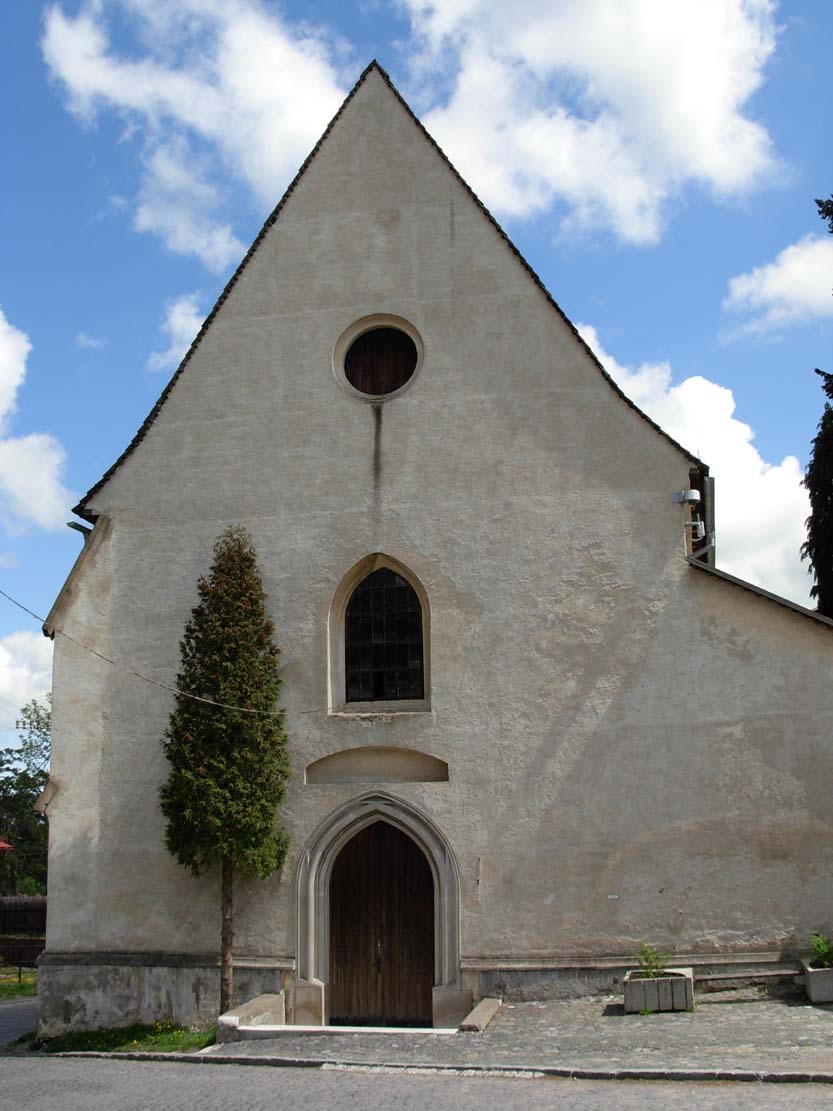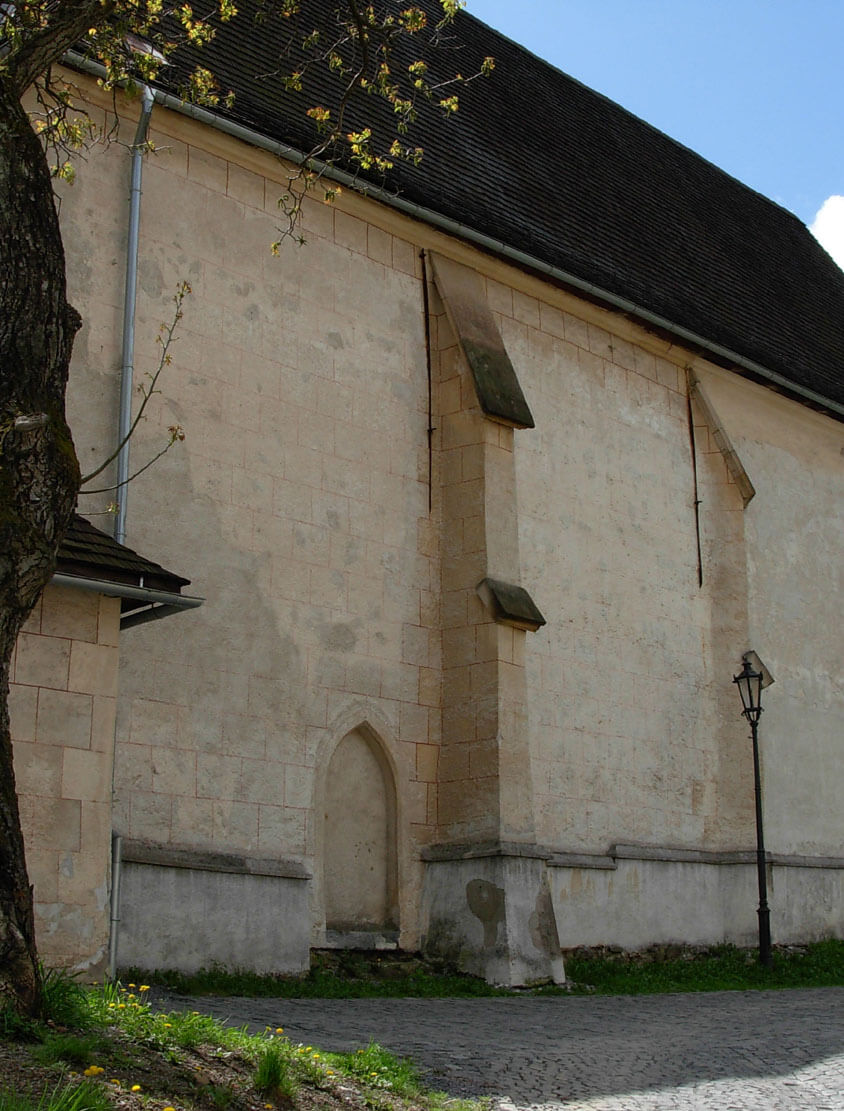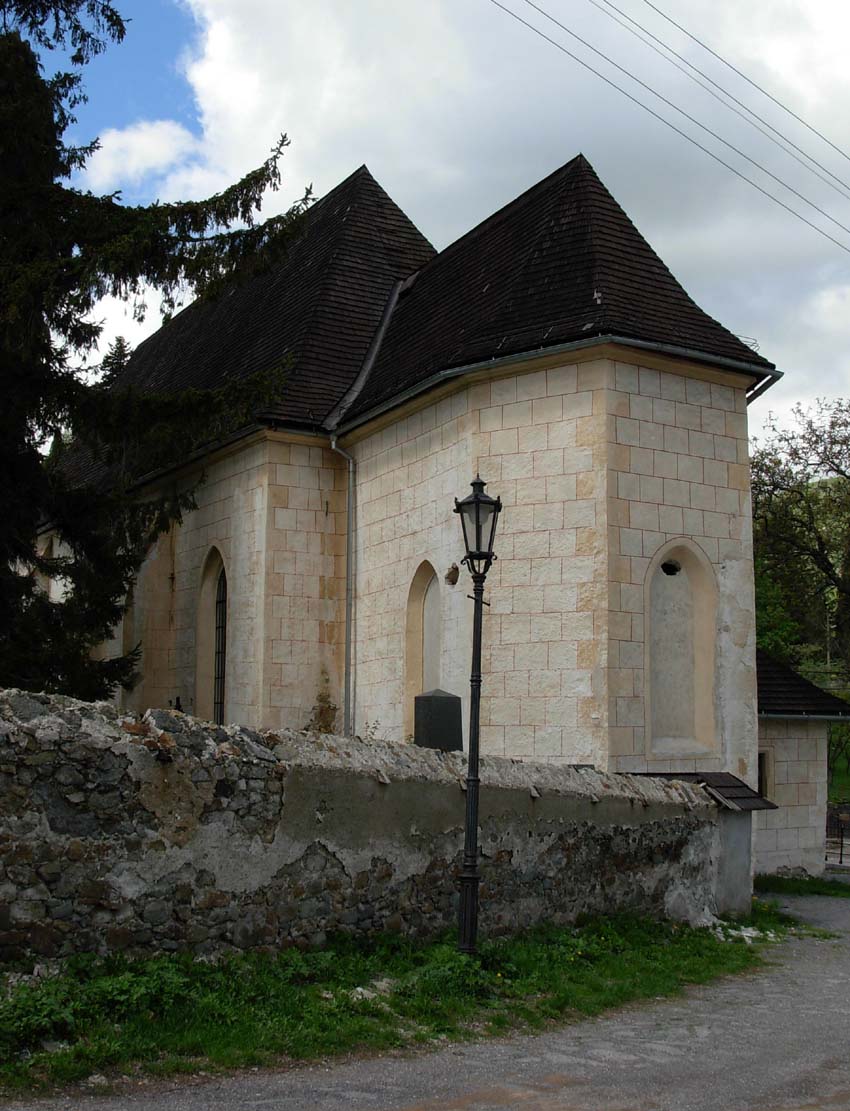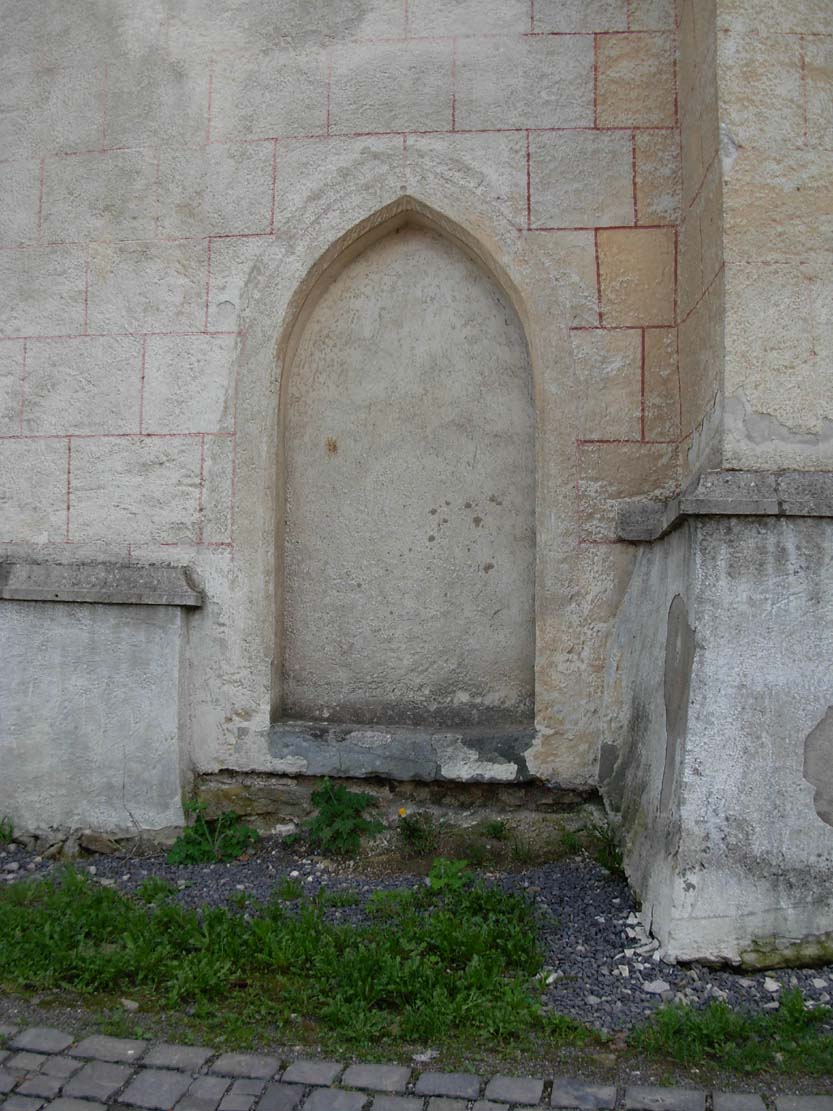History
The church was built in 1512-1514 with the donations of wealthy miners, especially Erasmus Roessl, the mayor of Banská Štiavnica. Perhaps the workshop of the famous master Anton Pilgram was involved in the construction of the vault of its chancel. In 1580, the nave of the church was enlarged at the expense of the town, while in the eighteenth century the whole was renovated. At that time, a tower was also erected on the roof ridge of the nave. During the Second World War the church burnt down. It was repaired in the years 1947-1950, but the Baroque tower has not been restored. The last major renovation works were carried out in 2014.
Architecture
The church was built on the southern side of the charter town, on the Frauenberg Hill. At the end of the Middle Ages, it was a late-Gothic, towerless building with an elongated, aisleless nave and a narrower, short chancel, polygonal on the eastern side. The nave was originally two-bay, but in the last quarter of the 16th century it was extended by two additional bays of the same width and height.
The nave of the church was reinforced with numerous buttresses, while the small chancel received smooth, vertically undivided facades. Both parts also differed due to a plinth with a moulded cornice, which the chancel did not had. The walls were pierced with pointed windows, but in accordance with the medieval building tradition, the northern façade was deprived of them. Pointed forms had entrance portals in the nave: north one and west one. The main, more decorative was the western portal with intertwining moulding springing from the plinth, while the jamb of the northern portal was only chamfered.
The interior of the nave was originally not covered with a vault. In the chancel a late-Gothic vault was built, with a network of straight and bent ribs, creating dynamic motifs similar to stars. The ribs were lowered onto the wall pads, creating the so-called dovetails, i.e. intersecting ribs gradually embedded in the walls.
Current state
Despite the late date of construction and even later expansion, the church today has mostly a late-Gothic character. Its most valuable element is the chancel vault, attributed to the school of architect Anton Pilgram. It is also worth paying attention to the two nave portals, of which the northern one is walled up today. The interior of the nave has an early modern decor.
bibliography:
Slovensko. Ilustrovaná encyklopédia pamiatok, red. P.Kresánek, Bratislava 2020.




